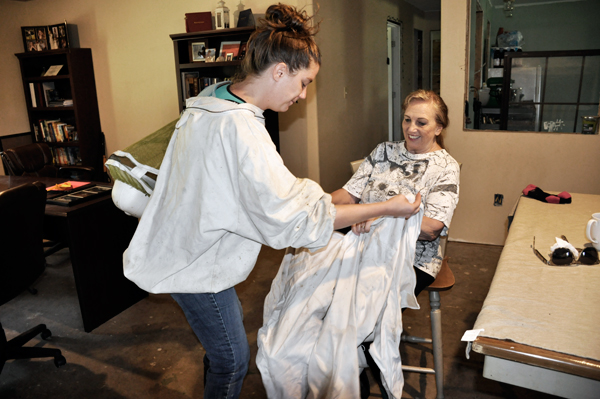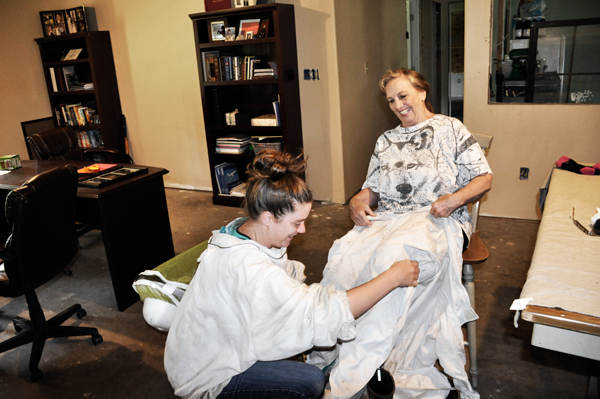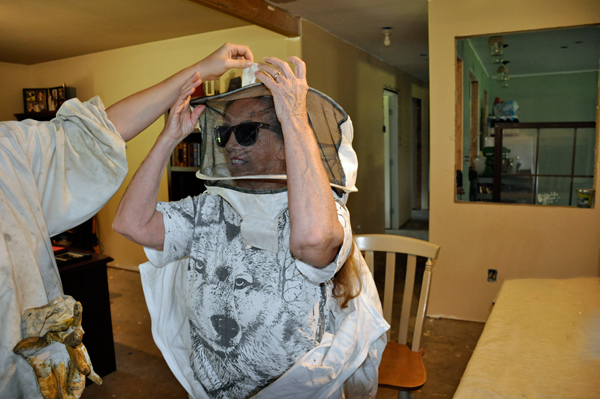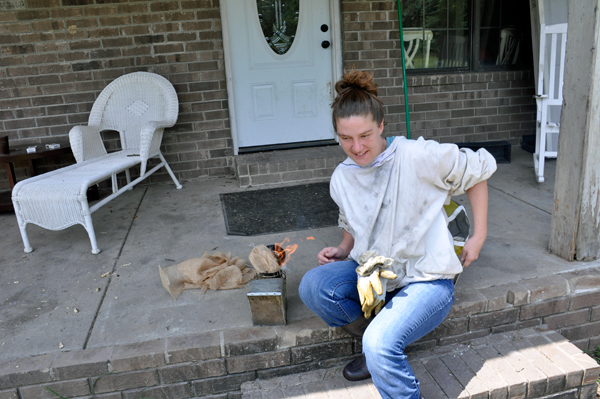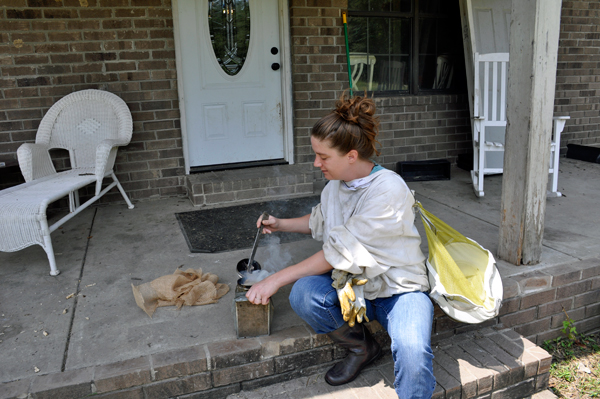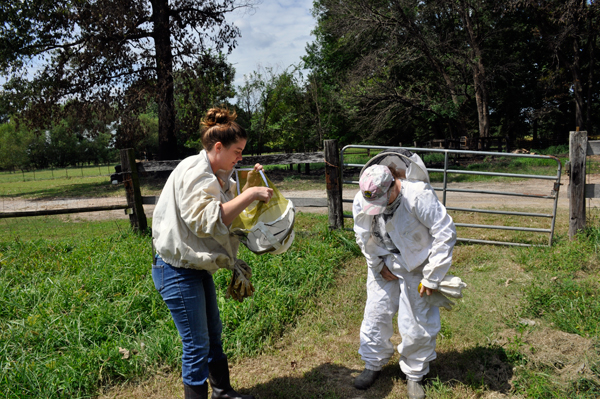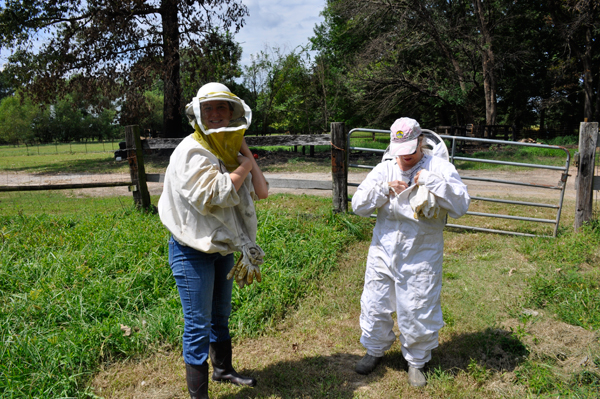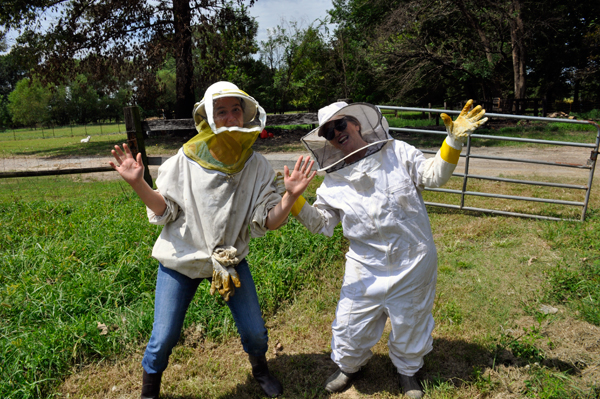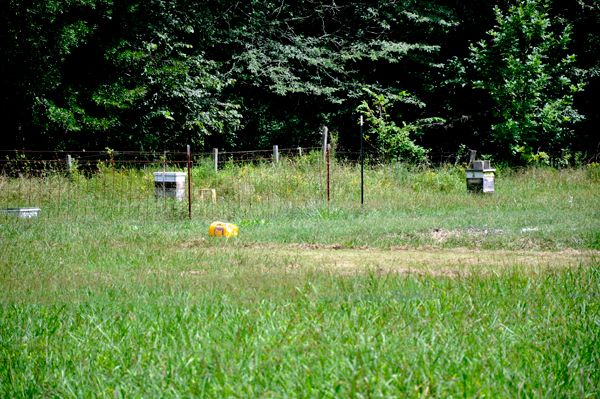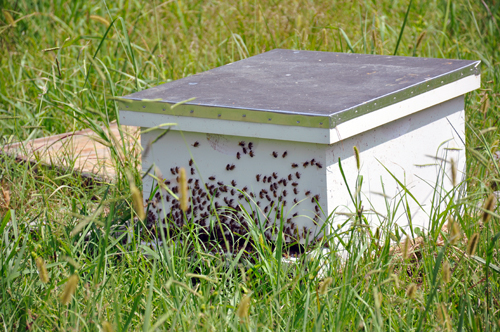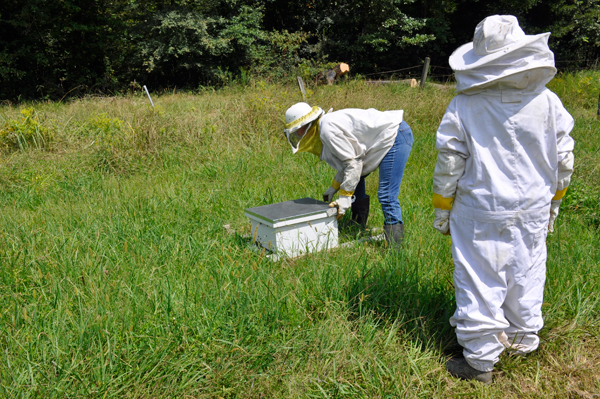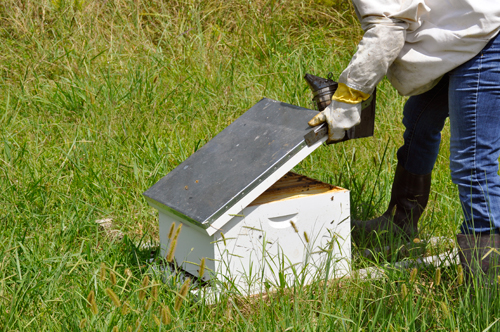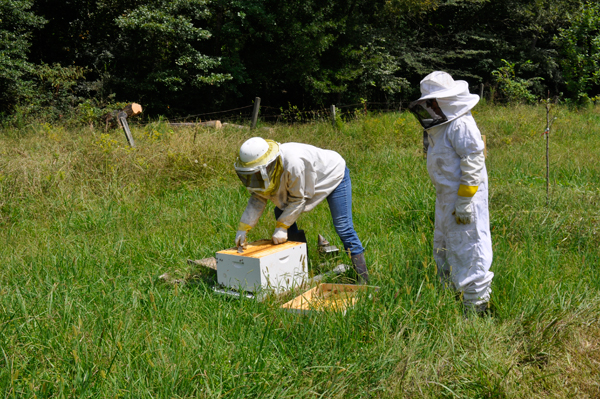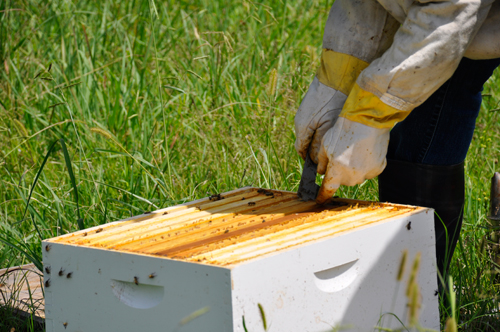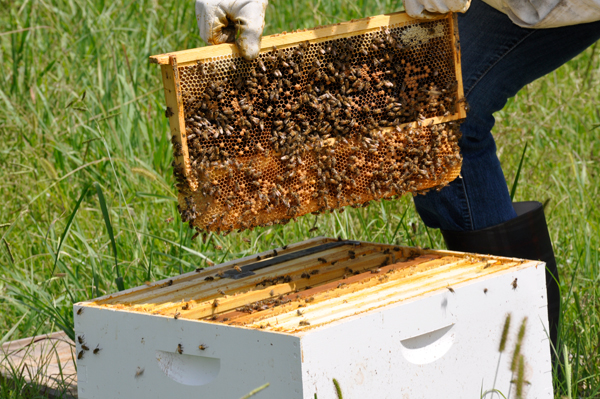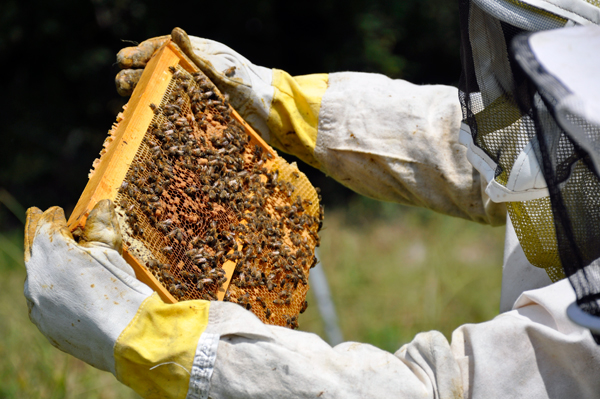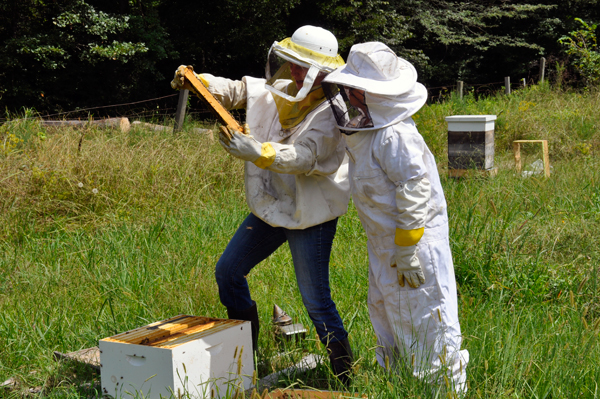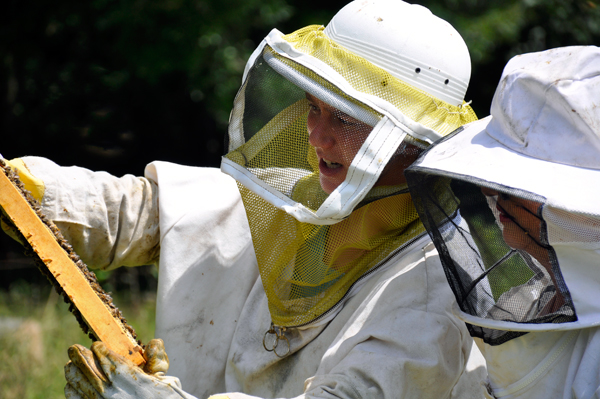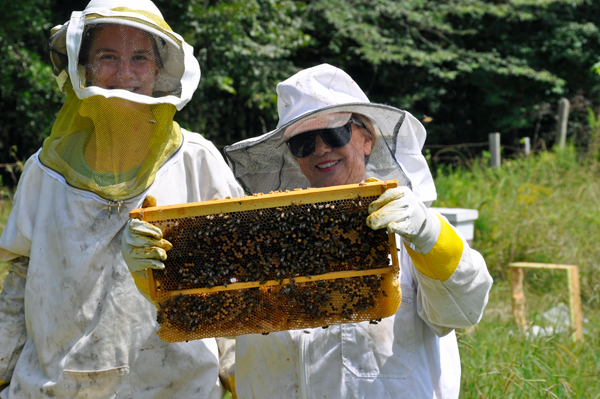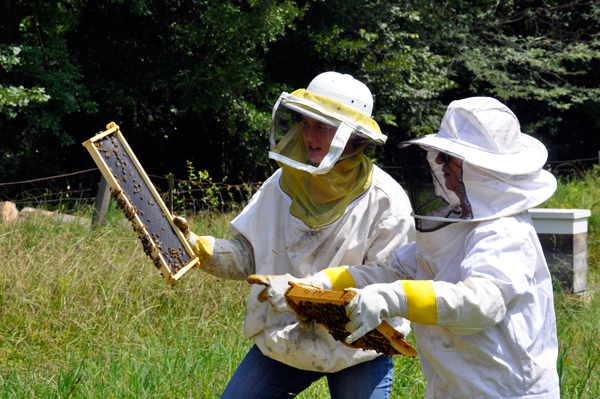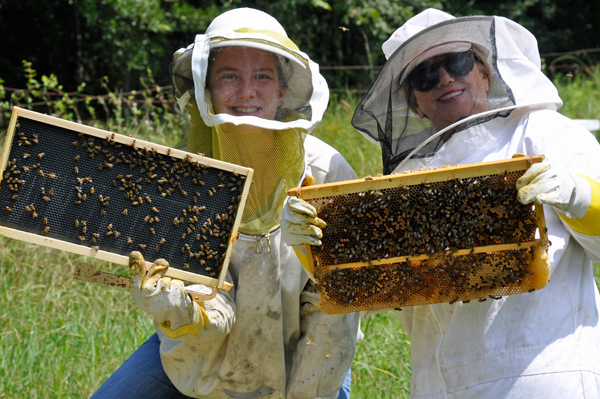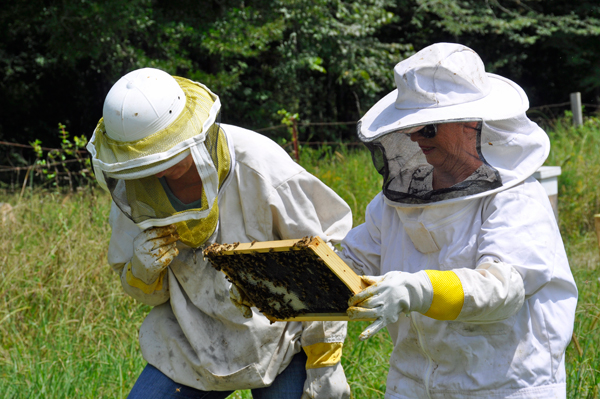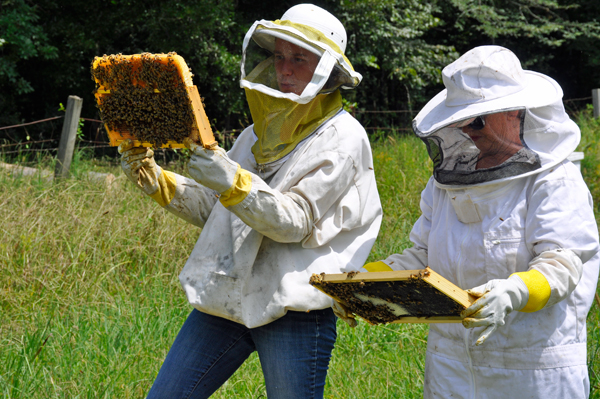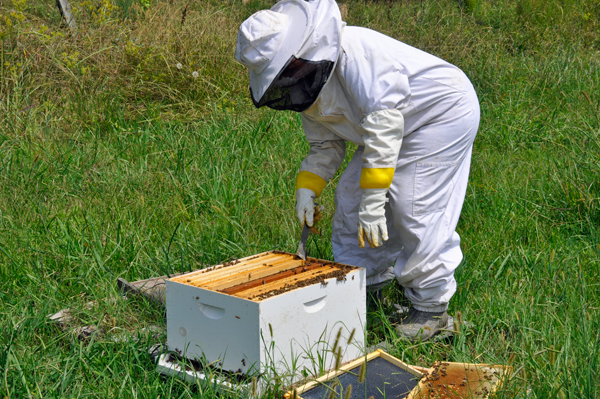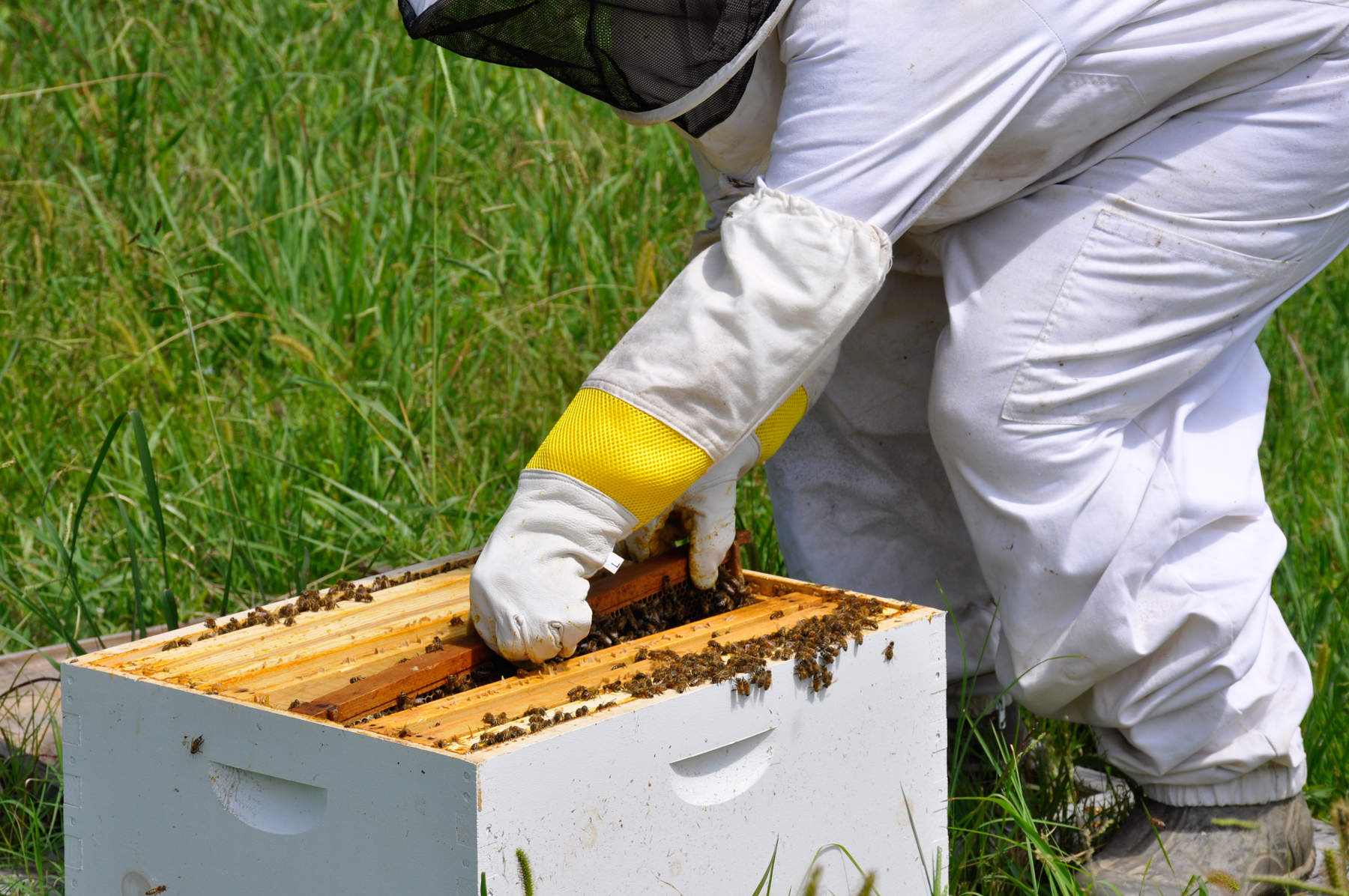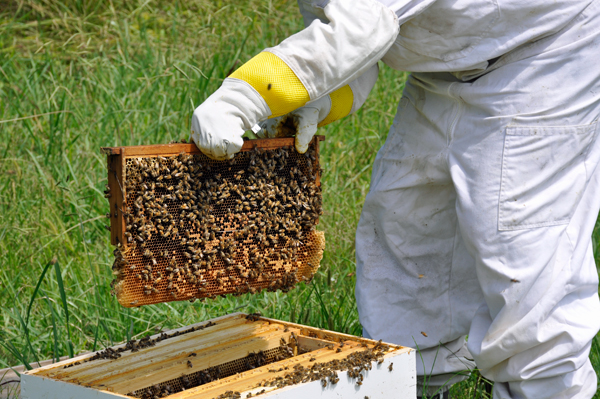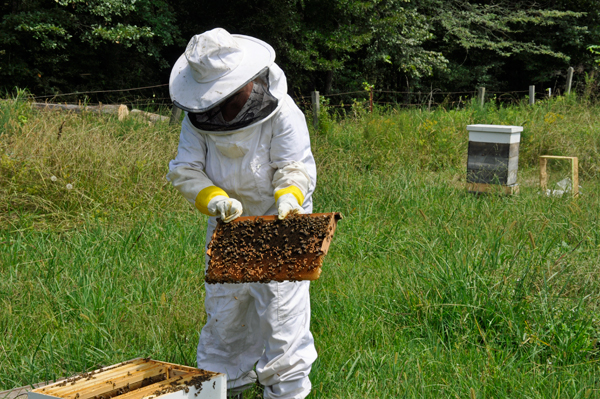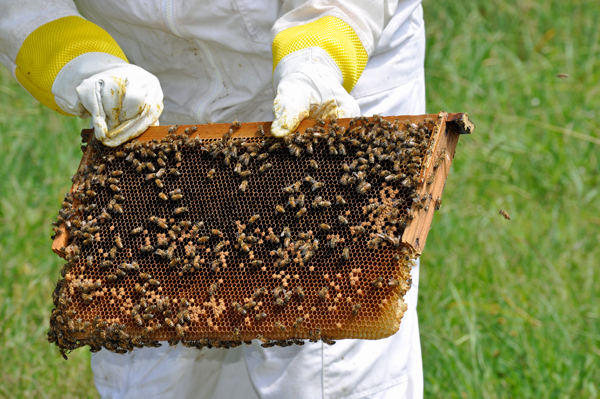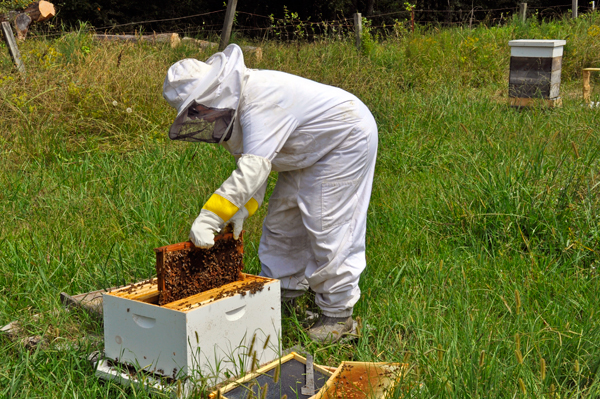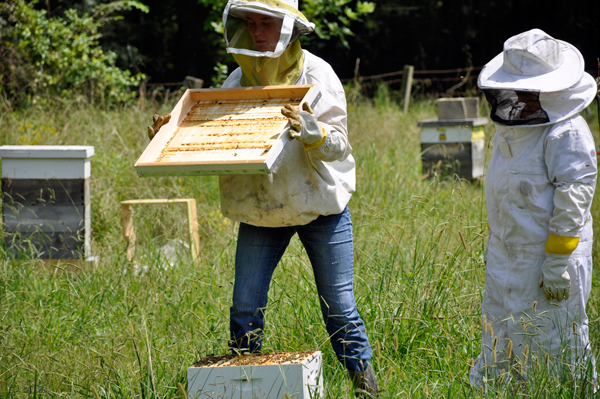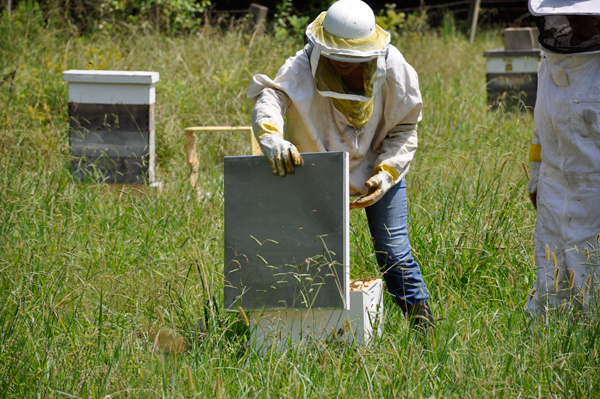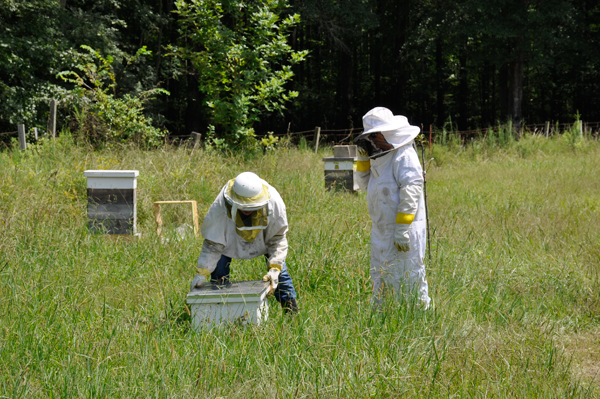Bees are
flying insects closely related to wasps and ants, known for their role
in pollination and, in the case of the best-known bee species, the European
honey bee, for producing honey and beeswax. There are nearly 20,000
known species of bees in seven recognized biological families. They
are found on every continent except Antarctica, in every habitat on
the planet that contains insect-pollinated flowering plants.
Some species including honey bees, bumble bees, and stingless bees
live socially in colonies. Bees are adapted for feeding on nectar and
pollen, the former primarily as an energy source and the latter primarily
for protein and other nutrients. Most pollen is used as food for larvae.
Bee pollination is important both ecologically and commercially; the
decline in wild bees has increased the value of pollination by commercially
managed hives of honey bees.
Bees range in size from tiny stingless bee species whose workers are
less than 0.08 inches long, to Megachile pluto, the largest
species of leaf cutter bee, whose females can attain a length of 1.54
inches. The most common bees in the Northern Hemisphere are the Halictidae,
or sweat bees, but they are small and often mistaken for wasps or flies.
Vertebrate predators of bees include birds such as bee-eaters; insect
predators include bee wolves and dragonflies. |
